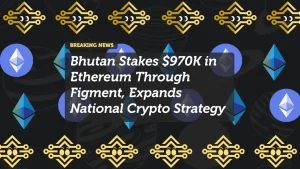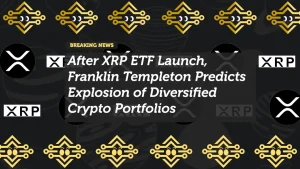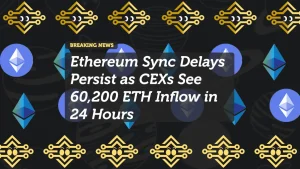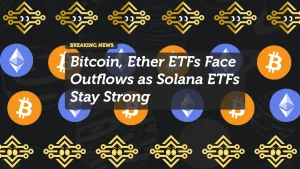
Imminent Explosion? Ether Faces Historic Supply Shortage as ETFs and Staking Drain Circulation
Ethereum is running out of steam — not because demand has fallen, but because it’s breathing emptiness. Across exchanges, the circulating supply of ETH is collapsing to levels unseen since early 2021, while demand from ETFs, staking protocols, and DeFi vaults accelerates at record speed.
The paradox: a quieter Ethereum market hides what could be the most bullish setup in years.
The Great Ethereum Drain
According to data from Glassnode and Nansen, the total ETH held on centralized exchanges has plunged below 11% of total supply — the lowest since the network’s inception.
- 33.2 million ETH is now locked in staking contracts.
- 6.4 million ETH sits in spot Ethereum ETFs.
- 8+ million ETH are parked in DeFi protocols and long-term treasuries.
What remains freely tradable? Roughly 12% of circulating Ether — an all-time low for liquid supply.
“Ethereum is undergoing the perfect storm of scarcity,” said Jamie Coutts, crypto market strategist at Real Vision. “ETFs are absorbing supply faster than miners ever could. It’s the digital equivalent of a liquidity black hole.”
ETFs: The Quiet Accumulators
Since the approval of spot Ethereum ETFs in mid-2025, institutional accumulation has exploded. Data from CoinShares shows that these ETFs have added over 650,000 ETH in just four weeks, pushing total holdings past $15 billion.
BlackRock’s iShares Ethereum Trust (IETH) alone absorbed $1.3 billion in net inflows last week, while Fidelity and VanEck reported their largest daily buys since launch.
“These funds don’t sell,” noted Kaiko analyst Clara Medalie. “Every inflow permanently removes ETH from active circulation, amplifying scarcity effects across spot markets.”
Staking: Ethereum’s “Ice Age” of Supply
Post-Merge, Ethereum’s staking economy has matured into a full-blown yield ecosystem. With over 27% of total ETH supply staked, the network has effectively created a “staking fridge” — coins frozen for months or years.
Protocols like Lido, Rocket Pool, and EigenLayer now compete to attract locked ETH, offering yields between 3.5% and 6.2%, further incentivizing holders to remove coins from exchanges.
The result? A shrinking float, reduced volatility, and upward pressure on spot prices when buying interest resurges.
“Every time ETH dips, whales restake,” said Glassnode co-founder Rafael Schultze-Kraft. “The structural shortage is deepening, and it’s only a matter of time before price reacts violently.”
DeFi and NFTs: Quiet Accumulation, Loud Effect
While staking and ETFs grab headlines, Ethereum’s DeFi protocols continue to consume liquidity at scale. Uniswap, Aave, and MakerDAO collectively hold over $8 billion in ETH collateral, while NFT marketplaces like Blur and OpenSea see increasing volumes denominated in ETH.
Even Ethereum-based stablecoin projects — like USDe and Dai — are indirectly removing ETH from circulation by locking collateralized assets for liquidity minting.
The cumulative impact: a supply vacuum that could make the next ETH rally far more violent than previous cycles.
Technical Setup: Pressure Builds Beneath $4,500
On the charts, Ethereum has traded in a tight range between $4,300 and $4,600, consolidating after months of steady gains.
Key levels to watch:
- Immediate support: $4,300
- Critical breakout zone: $4,700
- Target if broken: $5,200 – $5,400 range
The Relative Strength Index (RSI) sits near 52 — neither overbought nor oversold — signaling room for expansion in either direction.
“The compression here feels eerily similar to 2020, just before the DeFi summer,” wrote trader @CryptoKaleo on X. “Low volatility, vanishing supply, and rising demand — you don’t need to be a genius to see what happens next.”
Macro Winds: Inflation, Rates, and Digital Gold 2.0
While Bitcoin continues to dominate headlines amid macro uncertainty, Ethereum’s underlying use case is drawing institutional parallels to digital gold with yield.
With real yields dropping and central banks hinting at rate cuts, investors are seeking assets that combine scarcity with return potential — and Ethereum, with its deflationary issuance and staking yield, fits that thesis perfectly.
The EIP-1559 burn mechanism continues to remove between 2,000 and 3,500 ETH per day, meaning Ethereum is still net deflationary under average network activity.
Could ETH Explode? Analysts Weigh In
A growing number of analysts now forecast that Ethereum could outperform Bitcoin in Q4 2025, driven by structural supply constraints.
- Bloomberg Intelligence predicts ETH could hit $6,200 if ETF inflows persist.
- Santiment notes “unusually high” whale wallet accumulation below $4,400.
- BitMine Research believes a short squeeze could propel ETH toward $7,000 before year-end.
“This is how explosive rallies begin — not in noise, but in silence,” said BitMine’s head analyst Tom Lee. “Ethereum’s float is evaporating faster than anyone realizes.”
Conclusion: The Calm Before the Surge
Ethereum isn’t running out of buyers — it’s running out of sellers.
With ETFs, staking, and DeFi protocols locking away more ETH every week, the network’s circulating supply has entered a historic drought. As traders fixate on short-term pullbacks, a much larger narrative is unfolding: Ethereum is becoming a scarce digital reserve asset.
If current trends persist, ETH’s next move might not just be a breakout — it could be a supply-shock explosion that redefines its valuation entirely.
















